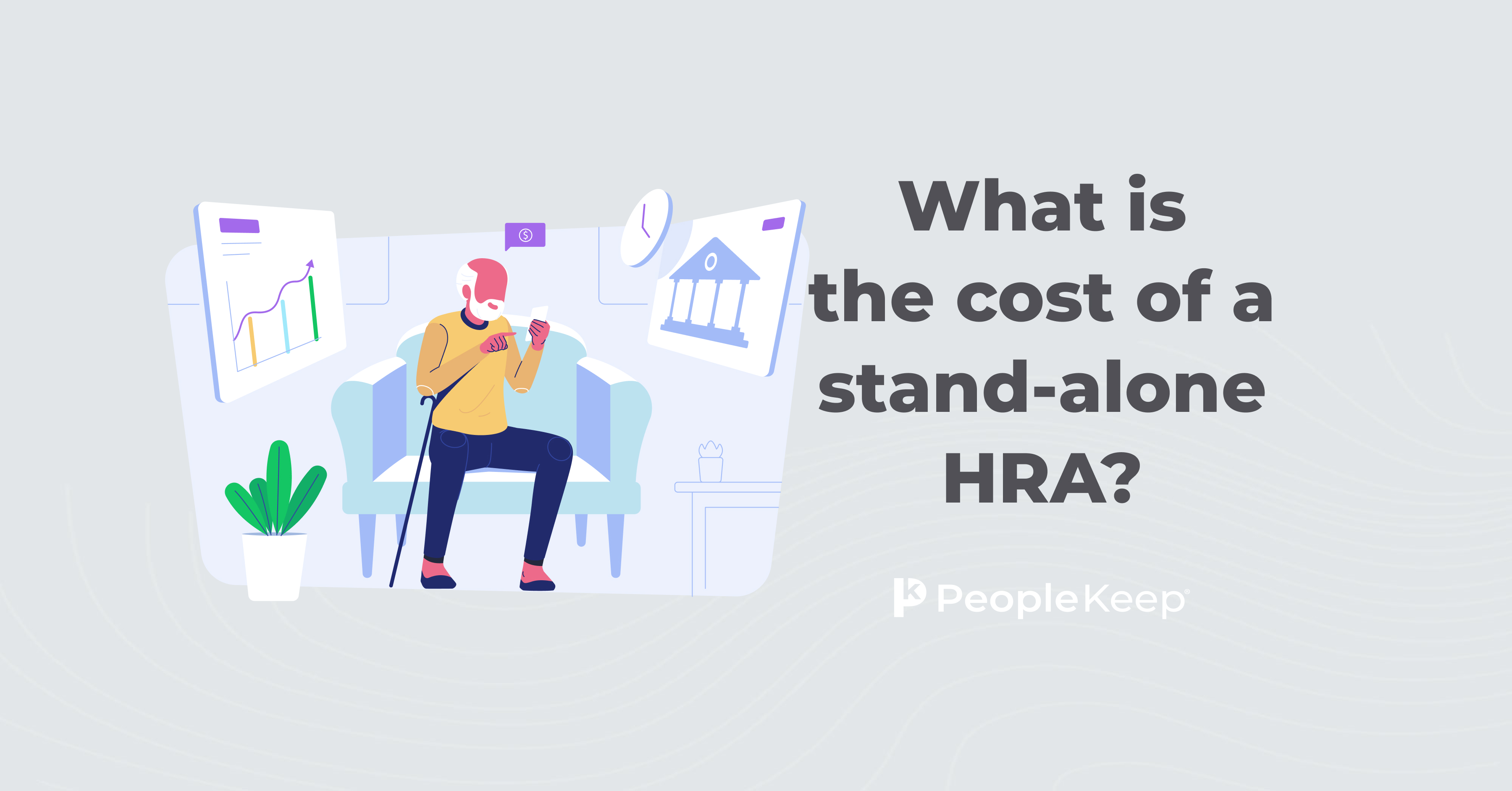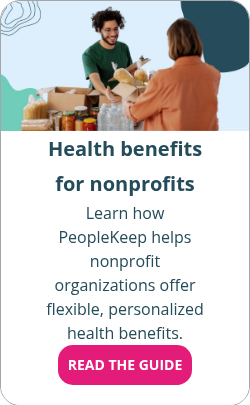Is the QSEHRA a good fit for nonprofits?
By Holly Bengfort on December 8, 2023 at 12:15 PM
Nonprofit organizations take the hardest hit when it comes to rising health insurance costs. They often struggle to find affordable healthcare options for their employees, especially when they have a small staff or limited budget.
The qualified small employer health reimbursement arrangement (QSEHRA) can provide some relief. This health plan option allows small employers to reimburse employees for their health insurance rather than purchasing it for them.
But is this type of arrangement a good fit for nonprofits? Let's find out.
What is the QSEHRA?
The QSEHRA is an employer-funded health benefit available to small businesses and nonprofits with fewer than 50 full-time equivalent employees (FTEs). With a QSEHRA, employers can reimburse employees for their individual health insurance premium costs and other qualifying medical expenses.
Here are some examples of reimbursable expenses:
- Prescription drugs
- Over-the-counter medication
- Doctor's visits
- Dental and vision care
- Mental health counseling
Reimbursements are free of payroll tax for the organization and its employees. Reimbursements are also free of income tax for employees as long as they have minimum essential coverage (MEC).
What are the benefits of the QSEHRA?
For nonprofit organizations, the QSEHRA is an attractive option for several reasons. Let's go over four of them in more detail below.
1. It's affordable
Based on data from KFF1, annual premiums for employer-sponsored health insurance in 2023 were $8,435 for single coverage and $23,968 for family coverage. That's a 7% increase compared to 2022.
With the QSEHRA, you can avoid annual rate hikes. Using the QSEHRA instead of a traditional group health plan gives you control over your budget. With a QSEHRA, employers simply set a monthly allowance and reimburse employees up to that amount. Additionally, any unused amounts at the end of the plan year stay with the employer.
According to our 2023 Nonprofit QSEHRA Report, the average monthly allowance nonprofits offered their employees in 2022 was $466.
2. It's customizable
Additionally, the QSEHRA is customizable. Nonprofits can set their own contribution limits, allowing them to tailor the benefit to fit their budget. This is especially important for nonprofits since they need to make every dollar count. While the QSEHRA has no minimum for contributions, the IRS sets annual limits for maximum contributions. This means you’ll never pay more than the annual limits per employee, contributing to better cost control.
3. It empowers employees
Another advantage of the QSEHRA for nonprofits is that it provides employees with choice and flexibility. Instead of getting stuck with a one-size-fits-all group health plan, an employee can choose their own individual health insurance policy. This gives them more choice over their doctors, coverage, and premiums, which is particularly helpful for people who have unique health needs or preferences.
4. It can help attract and retain top talent
Furthermore, the QSEHRA can help nonprofits attract and retain talented employees. Based on a survey published by the Nonprofit Times2, about 87% of nonprofits offer their employees some type of medical plan.
Offering a health benefit like an HRA is a valuable perk for potential employees. Our 2022 Employee Benefits Survey Report found that 87% of employees value health benefits, such as health insurance.
When a nonprofit offers a health benefit, it shows that the organization cares about the well-being of its staff. It can also help differentiate the nonprofit in a competitive job market.
Is the QSEHRA a good fit for your nonprofit?
Before deciding if the QSEHRA is the right choice for your nonprofit, it's important to carefully consider your organization's specific needs, budget, and employee demographics.
Here are three questions all nonprofits should ask when evaluating the benefit.
1. Would your nonprofit benefit from group health insurance?
For organizations with many employees, traditional group health insurance plans may offer more comprehensive coverage and cost savings. Working Americans have long considered group health coverage the premier employer-sponsored benefit, and choosing a QSEHRA would require the nonprofit to educate employees about a new and unfamiliar benefit.
If the nonprofit can't afford group health insurance, or if some other circumstance like minimum participation requirements makes group health a poor fit, the QSEHRA is a great option. If you employ more than 50 FTEs and still want to offer an HRA, an individual coverage HRA (ICHRA) is your best option.
2. Do your employees qualify for premium tax credits?
Many of the nation's nonprofit employees qualify for government premium subsidies. Nonprofits should know that IRS Code Section 36B3 requires employees to coordinate their premium tax credit with any QSEHRA allowances.
If your employee’s QSEHRA allowance is unaffordable based on their income, they can continue to collect any premium tax credits they’re eligible for. But if their QSEHRA allowance is considered affordable, they must waive their credits.If an employee is eligible for a premium tax credit and their allowance is unaffordable, they must reduce the amount of their credit dollar-for-dollar by the amount of the monthly HRA allowance. For example, an employee with a $500 premium tax credit and a $200 QSEHRA allowance would have a premium tax credit of $300 after adjustment.
Because of these requirements, employees may have some or all of their premium tax credits reduced by the QSEHRA. This doesn't necessarily diminish the QSEHRA's value, but nonprofits should consider the implications before launching the benefit. Learn how to calculate affordability and your premium tax credit with a QSEHRA.
3. Can your nonprofit offer a meaningful monthly allowance for healthcare costs?
Before choosing the QSEHRA, nonprofits should assess their budget and decide whether they can commit the funds necessary to make it meaningful.
Even though the QSEHRA has no minimum contribution requirements, the nonprofit should choose an affordable allowance that would be valuable to employees. According to our 2023 Nonprofit QSEHRA Report, nonprofits provided an average allowance amount of $345 to single employees and $525 to married employees with dependents in 2022.
Are there other alternative health benefits for nonprofits?
If the QSEHRA isn't a good fit for your nonprofit, don't think you need to give up on offering a health benefit altogether. Nonprofits can choose to provide employees with an ICHRA or taxable health stipend for medical expenses if they're unable to offer a formal health benefit. Employees can use this fixed allowance to help pay for an individual health plan and other out-of-pocket medical costs.
Conclusion
With a QSEHRA, you can offer a flexible health benefit at an affordable price while empowering your employees to take control of their healthcare. It offers customization and flexibility while helping nonprofits attract and retain top talent.
You should carefully evaluate the specific needs of your organization before making a final health benefits decision. Consulting with a benefits advisor or insurance professional can provide valuable insight and guidance.
This blog article was originally published on June 27, 2018. It was last updated on December 8, 2023.
Check out more resources
See these related articles

Business owner eligibility under a QSEHRA [infographic]
Curious about QSEHRA eligibility for business owners? This informative infographic breaks down everything you need to know in a simple, visually engaging format.

Pros and cons of the individual coverage HRA
Considering an individual coverage HRA (ICHRA)? Discover the pros and cons of this healthcare option to make an informed decision.

What is the cost of a stand-alone HRA?
Looking to budget for a stand-alone HRA? Get all the information you need on pricing and expenses in this comprehensive guide.



